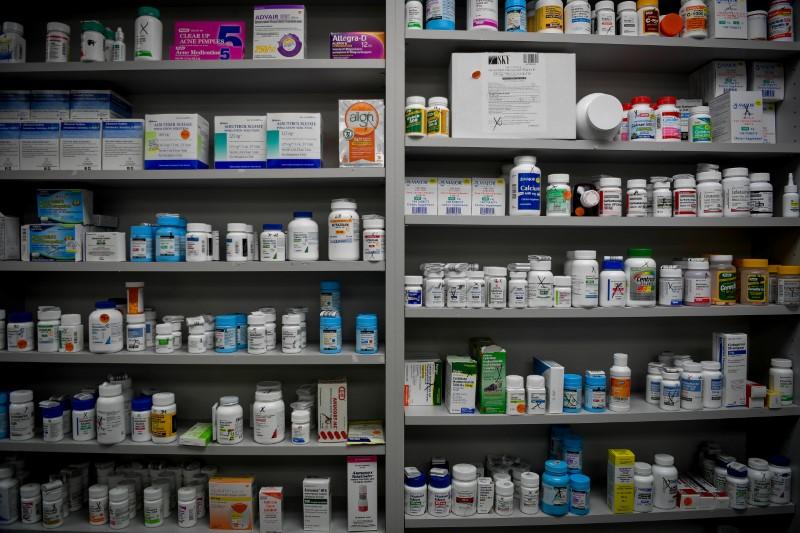
Forewarned is forearmed – and for U.S. seniors, the warning just arrived in the mail.
CHICAGO (Reuters) – Forewarned is forearmed – and for U.S. seniors, the warning just arrived in the mail.
Each September, enrollees in Medicare prescription drug and Advantage plans receive letters from their insurance companies detailing any changes in coverage for the year ahead. Called the Annual Notice of Change, the document is well worth reviewing, because it arrives just ahead of the annual fall plan open enrollment period, which runs from Oct. 15 to Dec. 7.
In many cases, the letter should be a wake-up call to re-shop coverage, especially where Part D drug plans are concerned. These plans often change their premiums from year to year, along with their rules for cost-sharing, coverage of specific medications – and even whether a specific drug will be covered.
Medicare eligibility begins at age 65, and the first choice is between traditional Medicare and an Advantage plan, an all-in-one managed-care alternative that usually includes prescription drug coverage. Advantage plans also cap out-of-pocket expenses. Seniors who choose traditional Medicare usually add a standalone drug plan- many also add a Medigap supplemental policy. But all drug coverage features can change annually, and Advantage plans can make changes to their networks of healthcare providers at any time.
“What worked for you in the past won’t necessarily be best for you in the future,” said Casey Schwarz, senior counsel for education and federal policy at the Medicare Rights Center, a nonprofit consumer advocacy group. “It’s important to look at your options and evaluate whether you should switch plans.”
Few Medicare plan users re-shop their coverage, and those who do tend to focus only on premiums, said Schwarz. “People often mistakenly just choose the least expensive premium, or one that is middle-of-the-road.”
She urges people also to evaluate the network of providers – pharmacy delivery options in the case of standalone drug plans, and healthcare providers in the case of Advantage plans. Also read carefully the so-called formulary, which describes the rules for coverage of a medication – whether any quantity limits are imposed, or if the red tape of “prior authorization” will be invoked.
MORE COMPLEXITY
Drug plans are becoming more complicated. Most have deductibles, and just over half will charge the full amount permitted under Medicare’s rules ($405), according to the Kaiser Family Foundation (KFF). And most plans have shifted to using multiple copayment (flat fee) or coinsurance amount (percentage of total cost), rather than a single coinsurance rate. This is especially true for high-cost medications.
“Cost-sharing was more simple in the early days of Part D,” said Juliette Cubanski, associate director of the program on Medicare policy at KFF. Higher coinsurance rates could leave enrollees with substantial out-of-pocket costs, especially for high-cost specialty drugs.
Low-income seniors may face an additional challenge this year in finding a good-fit plan. A low-income subsidy program covers most or all insurance costs for roughly 12 million older Americans. But the number of plans that provide no-premium coverage will fall 6 percent next year – and seven regions will have no more than four plan offerings. Most notably, Florida will have just two.
One bit of good news is the continued shrinking of the notorious “donut hole,” the gap in coverage that affects plan enrollees with intensive drug needs. The gap next year begins when total combined spending by you and your insurance company reaches $3,750 in drug costs, and coverage resumes when total out-of-pocket spending reaches $5,000.
Outside the gap, your plan pays 75 percent of total costs, but that plunges to just 15 percent inside the gap. Under the Affordable Care Act, costs borne by enrollees inside the donut hole are shrinking gradually. In 2018, enrollees who fall into the gap will receive a 65 percent discount on brand-name drugs (up from 60 percent this year). The discount on generics will rise from 49 percent to 56 percent.
HOW TO SHOP PLANS
The best starting point for shopping plans is the Medicare Plan Finder at the Medicare website (). Plug in your Medicare number and drugs (you will need each drug’s name and dosage). The plan finder then displays a list of plans that match your needs, including their estimated total cost (premiums and out-of-pocket expenses)- which drugs are covered- and customer-satisfaction ratings. The finder also will give you advice about drug utilization and restrictions.
If your drug needs are complicated, a range of expert help is available.
State Health Insurance Assistance Programs (SHIPs) provide free counseling on coverage options (click here to find your local SHIP ). The Trump administration and congressional budget writers have proposed to eliminate SHIP, but any cuts – if they do come at all – will affect this fall’s enrollment season.
The Medicare Rights Center also offers free counseling by phone (1-800-333-4114).
Finally, if you are willing to pay to obtain expert help with plan selection, hire an independent, fee-based counseling service such as Allsup Medicare Advisor (here) or Goodcare (). For a few hundred dollars, these firms will provide a written, personalized plan analysis and offer phone consultations.
 0 comments
0 comments





